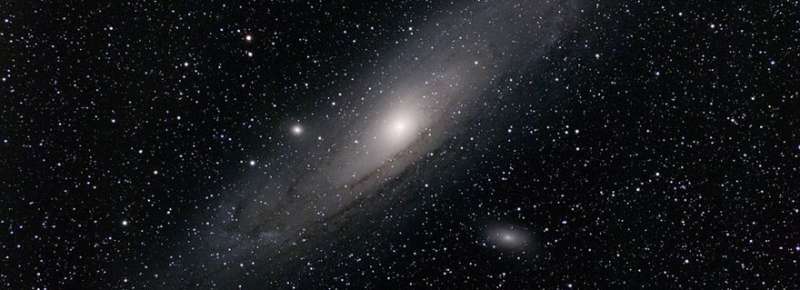Dancing with giants: dynamics of dwarf satellite galaxies

Dwarf satellite galaxies in the Milky Way perform different dances than researchers initially expected. Marius Cautun from Durham University received a Marie Curie grant to unravel the mysteries of this orbital dance. October 1st 2018 he will start his research at the Leiden Observatory.
Giant galaxies like our own Milky Way are surrounded by a large number of fainter galaxies, so called dwarf galaxies. These dwarfs perform a complex orbital dance around their parent galaxies. This dance is somewhat similar to the motion of the Jupiter moons around their giant planet. Theoretical models predicted that this dance should be composed of randomly oriented elliptical orbits. However, observations now reveal the opposite: most Milky Way satellite galaxies orbit all in the same plane and have orbits that are much more circular than expected.
'This is a major problem that lacks an answer', tells Cautun. 'It could signal a fundamental breakdown of the current cosmological model. Or alternatively, that our own galaxy is very atypical: a 1 in a 1000 system.' Studies of dwarf satellite orbits cannot yet be carried out for other giant galaxies, such as our close neighbor the Andromeda galaxy. Therefore the only option is to examine the Milky Way in more detail.
Cautun hopes his research will deliver ground-breaking new insights into the anomalous dynamics of the Milky Way satellites and uncover the formation history of our galaxy. Cautun will first investigate the phenomena that give rise to the atypical orbits of the satellite galaxies. The satellite galaxies form some distance away from the Milky Way and then are accreted onto the dark matter halo of our own galaxy. 'This accretion of satellites takes place along preferential directions, the so called filaments of the cosmic web. I will study to what extent this process induces correlations in the orbits of satellite galaxies', explains Cautun.
Secondly, current studies have analysed only the orbits of bright Milky Way satellites. However, fainter dwarf satellites must also contain vital clues. Around our galaxy, more than 40 of such examples are known. Using state-of-the-art galaxy formation models, Cautun will perform detailed cosmological simulations to predict the distribution of very faint Milky Way satellites. 'Next, I will compare these model predictions with observations to make an unprecedented test of the current cosmological paradigm. The same simulations are also essential for testing the nature of dark matter and galaxy formation models.'
Provided by Leiden University




















